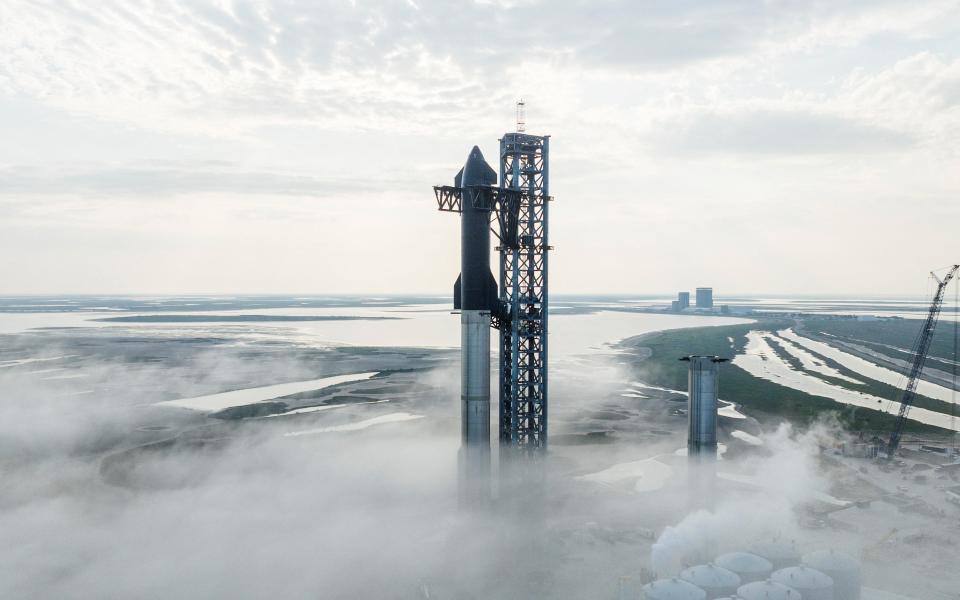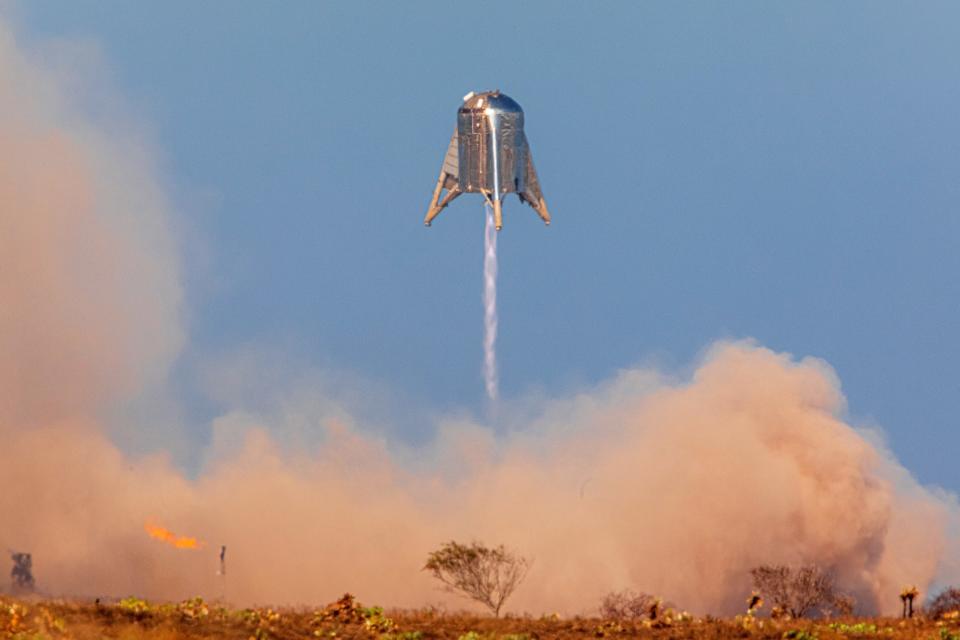Photos show how SpaceX's Starship evolved from a trash-can-shaped prototype to the most powerful rocket ever built
- Oops!Something went wrong.Please try again later.
SpaceX's mega-rocket Starship is set to launch toward space this weekend, after exploding on its first try.
Starship reaching space would be a victory for Elon Musk and SpaceX that's over a decade in the making.
Here's how Starship has evolved, from the first concept to today.
SpaceX is planning to launch its Starship mega-rocket toward orbit again as soon as Saturday. Mere months ago, the ship tried to fly to space for the first time and exploded en route.
If it succeeds this time, Starship could quickly become the most powerful rocket in operation, a monumental feat over a decade in the making.
SpaceX founder and CEO Elon Musk introduced the early concepts of Starship in 2012, which back then was known as the Mars Colony Transporter.
Here's how the new launch system has evolved, from its first iteration as the Mars Colony Transporter, to the BFR ("Big Fucking Rocket"), to today's Starship-Super Heavy, in pictures.
What is Starship?

Starship is a futuristic-looking spaceship that's designed to stack atop a towering Super Heavy booster, making the world's first fully reusable launch system.
It should be able to heave more cargo than any previous rocket to Earth's orbit, the moon, and Mars.
But first Starship has to prove it can reach orbit at all.
On its first attempt, in April, Starship failed to separate from the Super Heavy booster 24 miles above ground, ultimately tumbling, until it exploded.
However, this was just the latest in a series of multiple explosions over the years.
2016: Musk reveals the first design for his "Interplanetary Space Transporter"

At an international space technology event in 2016, Musk finally revealed the long-awaited prototype design of SpaceX's biggest rocket yet.
Originally teased under the name Mars Colonial Transporter, Starship's first rocket design was called "Interplanetary Space Transporter" as SpaceX realized its ambitions went beyond transport to Mars.
"This system really gives you freedom to go anywhere you want in the solar system," Musk said at the event, per Popular Science.
The 2016 design put forward a carbon fiber hulled rocket, with expandable legs that could deploy during landing.
2017: the BFR era (Big Fucking/Falcon Spaceship)

By 2017, the design started to look somewhat more like its final Starship form. This version was named BFR.
SpaceX's president Gwynne Shotwell eventually announced BFR stood for "Big Falcon Rocket", a nod to the company's other rocket. But it was widely reported at the time the acronym originally referred to a very different name used colloquially in-house as "Big Fucking Rocket." However, Musk has never publicly confirmed this.
More recognizable as a Starship, its landing legs were gone, replaced by the characteristic arrow-like fins sticking out of the side of the rocket — though it has three fins instead of two.
The biggest difference with the final design is that in 2017, the rocket was still due to be molded out of carbon fiber. But that was soon going to change.
2019: Starhopper reaches 492 ft in flight

The first Starship prototype wasn't really a Starship at all. Dubbed "Starhopper," the stout craft was only ever meant to test the power of the Raptor engine SpaceX was developing for Starship.
The little Starhopper showed the engine's might in 2019, when it leapt 492 feet in the air and successfully landed back down.
2019: Starship Mk1 blows up on its first test

Musk unveiled the first bonafide Starship prototype in 2019. But this design would not fare well.
The biggest leap made between the BFR concept and the Mk1 Starship was that the new prototype was made of steel, a material choice that has become the mainstay of the Starship rockets.
"The carbon fiber is $135 a kilogram," where about 35% of it is scrapped, "so you're starting to approach almost $200 a kilogram. The steel is $3 a kilogram," Musk told Popular Mechanics in 2019.
Musk then ambitiously announced the rocket would be ready to fly within two to three months.
The first Starship, though, did not last long. On the first liquid nitrogen pressure test, designed to simulate and execute the pressure during a real launch, Starship Mk1 burst apart.
2020 and 2021: Starship 8 soars nearly 8 miles in the air and Starship 15 sticks the landing

The next few Starships were more successful than the first, flying miles into the air above SpaceX's facilities in Boca Chica, Texas.
The first full-fledged Starship prototype to really catch some air was called Starship serial no. 8, or SN8. It soared 7.8 miles high, then cut its engines and belly-flopped toward the ground, proving the spaceship could fly. Even so, that prototype slammed into the landing pad and exploded.
It took three more prototypes blowing up before a Starship finally stuck the landing in May 2021. That prototype was called SN15.
Musk's long-term plan is for Starship to be a reusable rocket, and for the first time, SN15 showed the spaceship could touch down back on its landing pad unscathed.
With these prototypes' successes, SpaceX was ready to move to its next step: launching the rocket atop its Super Heavy booster.
But that maiden flight wouldn't happen for another two years.
2023: Starship's first fully integrated test flight starts in a rain of debris and ends in a fireball

The next landmark trial for Starship was for the spaceship to take its fully integrated form — stacked on top of its Super Heavy Booster.
The spaceship took off atop its booster, aiming to reach orbit for the first time, in April 2023. The rocket's fully integrated maiden flight test, however, did not end exactly as hoped.
Though the rocket successfully took off, the booster was eventually unable to separate from the spaceship, leaving the rocket to tumble out of control and eventually burst mid-air.

It later came to light that, in addition to the separation failure, SpaceX had miscalculated just how resistant its concrete launchpad would be against the dozens of Raptor engines in the booster.
Reports suggest the rocket blew a crater through the launchpad, blasting sand, concrete, and debris far afield, some of which was said to have landed in a small town 5 miles away.
2023 take 2? Musk plans for another flight of Starship shortly

Musk is undeterred and aims to fly the next iteration of his rocket shortly.
Since its last flight, SpaceX has made at least 1,000 changes to the rocket design, Musk previously told reporter Ashlee Vance, the most noticeable of which is the introduction of a vent between the spaceship and the booster.
Engineers also have devised a risky maneuver — one designed to help prevent the explosive error of the last test. The Starship spaceship will fire up its own engines as its booster is still pushing it forward.
This will be the rocket's most ambitious test flight yet.
Read the original article on Business Insider

